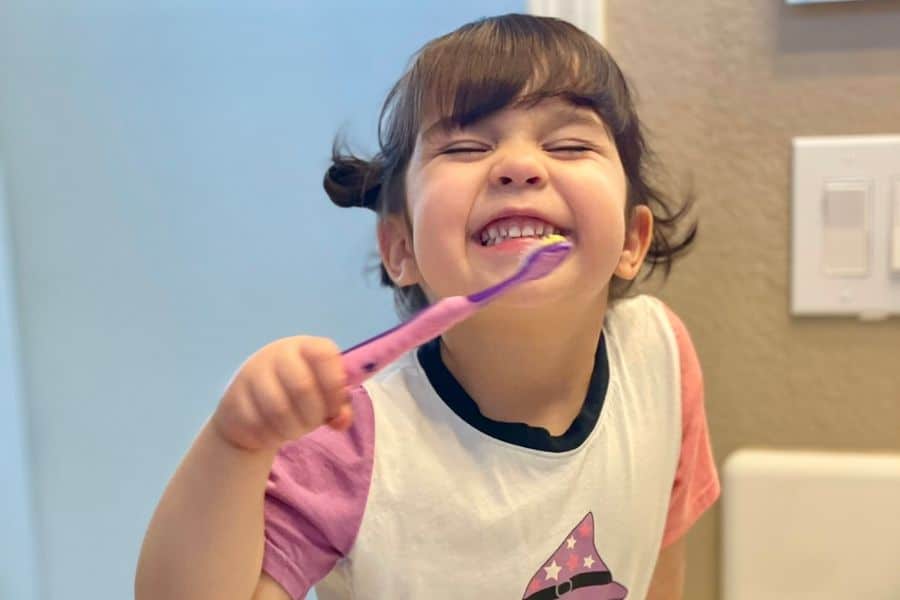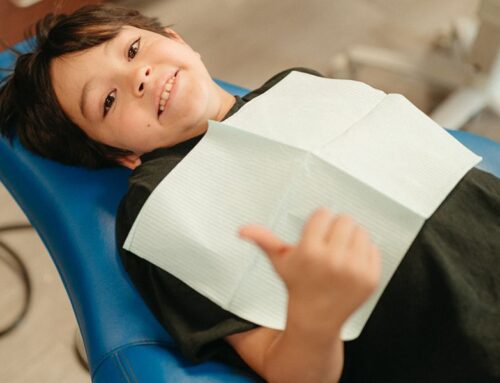
Kids, kids, kids! Did you know that February is National Children’s Dental Health Month?
For all of you parents out there (new and/or seasoned), I’m sure a few of the following questions have crossed your mind at some point in time, and I’d love to offer guidance in answering them for you!
- Should I worry about my child’s oral health before they even have any teeth?
- When should my child’s first dental visit be?
- How do I properly go about brushing and flossing my child’s teeth?
- Are baby teeth even important?
- Are there foods/beverages I should limit when it comes to my child’s diet?
It’s never too early to start placing priority on your child’s oral health and hygiene! Using a damp washcloth placed over your finger to wipe your baby’s gums will help to limit excessive breast milk/formula from pooling and is a great way to start. Once you notice baby teeth beginning to erupt, introducing a toothbrush early on creates an awareness and helps to establish a routine for both you and your child. Many baby and child-friendly toothbrushes are available in the dental aisle of stores, with a wide variety to choose from. A fluoride-inclusive toothpaste is also recommended to help promote remineralization, which promotes strong tooth development and prevents cavities.
The American Association of Pediatric Dentists recommends scheduling a dental appointment for your child once their first tooth has poked through or once they’ve celebrated their first birthday. Honestly, the sooner your child is established at a dental home and can discover what an inviting and positive environment it is, the better. Often times, young children aren’t brought to the dentist until a dental problem has surfaced and they are in pain. This initial experience can then easily become a traumatic one.
When it comes to brushing your child’s teeth, there are a few ways to introduce the habit. Above, I had mentioned using a damp washcloth-covered finger to run over their gums early on. In the infant section at Target or Walmart, you may also come across textured rubber finger inserts that can be used on newly erupted baby teeth. Allowing your child to watch you brush your teeth may spark interest. Invite them to join you using their own, and then help them by demonstrating the proper way to do it afterwards to ensure that it is done correctly and effectively. Incorporating a daily flossing habit is also important to reach and clean in between your child’s teeth and below the gum-line to further prevent cavities from forming in contact spaces.
Below are a few photos depicting some comfortable positions for you and your child to try when it comes to toothbrushing if standing up in the bathroom is difficult or uncomfortable for your child.


- sugary breakfast cereals
- crackers, chips, cookies
- fruit snacks (dried fruit, fruit rollups, gushers, etc)
- candy
- milk, formula, fruit juice, soda, sports drinks
- citrus fruits (highly acidic)
- fruits (apples, in particular)
- vegetables (celery, carrots, green leafy vegetables)
- cheese & yogurt
- nuts & seeds
Contact
Phone | (775) 376-7914
Email | info@salafamilydentistry.com
Hours
| Mon - Fri | 7:00am – 5:00pm |
| Saturday | 7:00am - 3:00pm |
| Sunday | Closed |
Location





